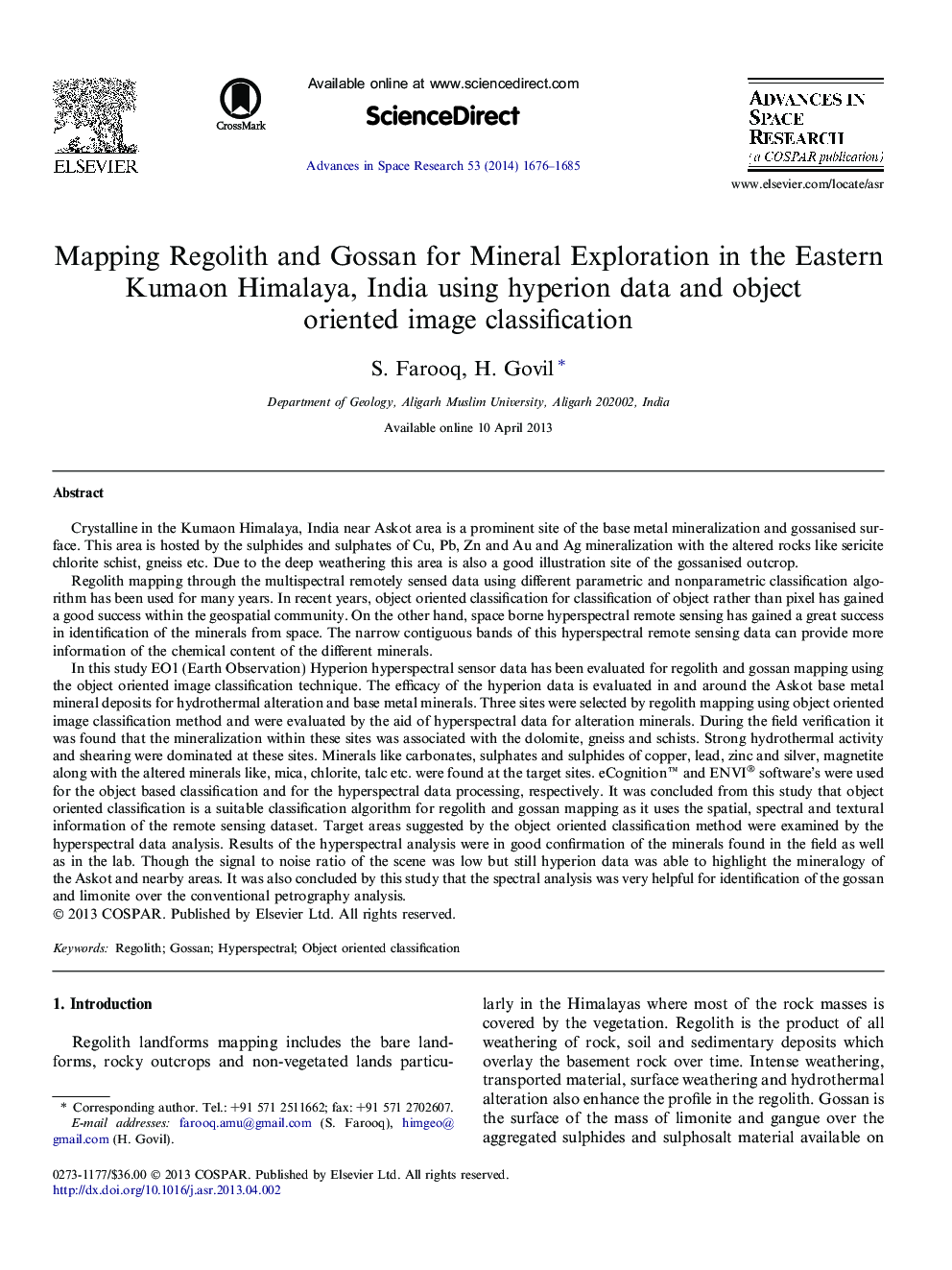| کد مقاله | کد نشریه | سال انتشار | مقاله انگلیسی | نسخه تمام متن |
|---|---|---|---|---|
| 1763620 | 1020013 | 2014 | 10 صفحه PDF | دانلود رایگان |
Crystalline in the Kumaon Himalaya, India near Askot area is a prominent site of the base metal mineralization and gossanised surface. This area is hosted by the sulphides and sulphates of Cu, Pb, Zn and Au and Ag mineralization with the altered rocks like sericite chlorite schist, gneiss etc. Due to the deep weathering this area is also a good illustration site of the gossanised outcrop.Regolith mapping through the multispectral remotely sensed data using different parametric and nonparametric classification algorithm has been used for many years. In recent years, object oriented classification for classification of object rather than pixel has gained a good success within the geospatial community. On the other hand, space borne hyperspectral remote sensing has gained a great success in identification of the minerals from space. The narrow contiguous bands of this hyperspectral remote sensing data can provide more information of the chemical content of the different minerals.In this study EO1 (Earth Observation) Hyperion hyperspectral sensor data has been evaluated for regolith and gossan mapping using the object oriented image classification technique. The efficacy of the hyperion data is evaluated in and around the Askot base metal mineral deposits for hydrothermal alteration and base metal minerals. Three sites were selected by regolith mapping using object oriented image classification method and were evaluated by the aid of hyperspectral data for alteration minerals. During the field verification it was found that the mineralization within these sites was associated with the dolomite, gneiss and schists. Strong hydrothermal activity and shearing were dominated at these sites. Minerals like carbonates, sulphates and sulphides of copper, lead, zinc and silver, magnetite along with the altered minerals like, mica, chlorite, talc etc. were found at the target sites. eCognition™ and ENVI® software’s were used for the object based classification and for the hyperspectral data processing, respectively. It was concluded from this study that object oriented classification is a suitable classification algorithm for regolith and gossan mapping as it uses the spatial, spectral and textural information of the remote sensing dataset. Target areas suggested by the object oriented classification method were examined by the hyperspectral data analysis. Results of the hyperspectral analysis were in good confirmation of the minerals found in the field as well as in the lab. Though the signal to noise ratio of the scene was low but still hyperion data was able to highlight the mineralogy of the Askot and nearby areas. It was also concluded by this study that the spectral analysis was very helpful for identification of the gossan and limonite over the conventional petrography analysis.
Journal: Advances in Space Research - Volume 53, Issue 12, 15 June 2014, Pages 1676–1685
